I’m going to try and catch up on some long past due posts about the High Hopes Project. Last June we launched from Virginia City High School in Nevada. I posted about the preparation for the launch which will give you good background on the payloads students designed. The launch went flawlessly – perfect weather, not a puff of wind.
Besides the student payloads and GoPro cameras, we launched our Flir infrared camera as well which gave us some interesting perspectives. Note the shadows in this shot:
Then note what appear to be shadows in this screenshot taken from the video shot by our infrared camera soon after launch:
What appear to be shadows are not. They are cooler areas on the ground caused by the shadows of the balloon and students. Note the balloon has already been launched and is 200 feet in the air (or more), how could its shadow be where it was before it launched?
Here is video of the launch in infrared:
And here is the launch taken from the ground:
One of the student payloads was an interesting sound experiment. The question they were trying to answer was: “At high altitude above 98% of the Earth’s atmosphere, would the air be so thin that sound would not travel through the thin air to be picked up by a microphone?” The students designed a Tie-Fighter from Star Wars (just for fun) and had the Star Wars theme playing on a loop. You can see the ball shaped speaker in the center of the video. They insulated the base so sound would not travel through the payload and be picked up by the microphone. It started out great, but unfortunately at about 42,000 feet it just got too cold (probably around -10F) and the batteries, which had lasted for 3 hours when they did a test in a school freezer at 15F, just quit. We edited together video from launch and then spliced in at about 8,000 feet and then just before the batteries died:
Another student payload took on the engineering task of releasing the “High Hopes” of the world. Students and others from around the world had submitted their high hopes for their school, community and the world through a Google Form or Twitter (about 1100 were submitted). The “Hopes” were printed out and cut out individually and placed in a payload students had designed to open about an hour into the mission. Again the batteries they had tested, and lasted for 5 hours at 15F, that ran the motor that would open up the payload to release the high hopes failed. Fortunately they had designed in a back-up system. When the balloon burst and the payloads fell to Earth at over 200 miles per hour (until the parachute slowed them down at lower altitude) a fin on the side of their payload caught the wind and pulled open a side of the payload and released the high hopes.
Here is video of the burst and high hopes release in slow motion:
After a flight we like to note what happens to the balloon on the way up. Note in the photo at the top of this post the 2000 gram balloon is probably about 6 – 8 feet across (we over-filled it a bit so it would go up fast and come down before it got too far up in the mountains and private property). When it burst it was just a bit bigger:
But just before burst at 95,000 feet … note any difference in balloon size? If so, why?
Here are some more photos taken up high:
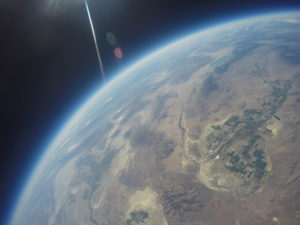
Yerington, Nevada, from 90,000 feet. A wide angle setting on this camera and the movement from falling exaggerates the Earth’s curve in the photo.
Many more photos on this Flickr album.
We came very close to “catching” this one on the way down, but were thwarted when we lost cell service (so GPS as well) at a key point in the descent and missed it by about 2 minutes.
Learning is messy!!

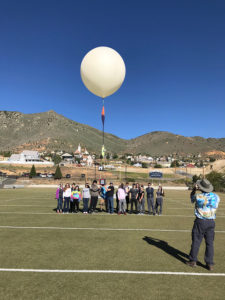
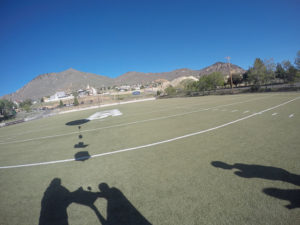
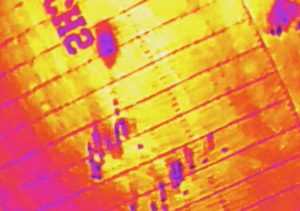
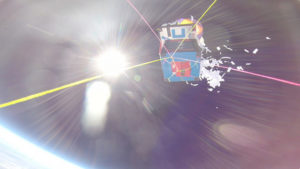
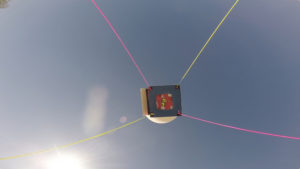
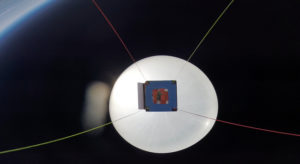
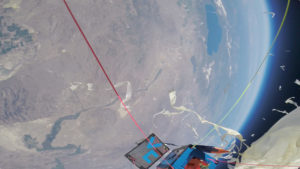
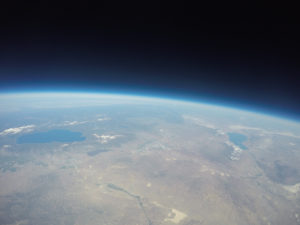
This is so cool! I love this experiment! Where did this student come up with this idea? I bet this was amazing to be a part of!
Which experiment?
I love this! Student initiated activities are priceless! This is something they will never forget. Learning through design and then letting the students create and use it for experience is great. Even failure is part of the procedure and students will take back and learn so much after reflection of the process.
Thank you for sharing!
Erika